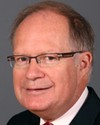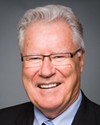Thank you.
First, on the investment piece, I agree totally. But if you take a look at investment in personnel, the Canadian Forces is probably at the top of the list when it comes to what we do for folks, if investment means training and education, compensation benefits and the like, and providing challenging opportunities in work.
For us, the three of us and my entire team--we have about 17,000 folks--this is our mantra: the right person at the right place at the right time with the right qualifications. That's the mantra. The key is how do you achieve that?
What we have in place is a career management system. I have about 250 career managers, as they're called, who actually work for one of the generals who reports to me. They are responsible, if I were to use you as a case, for knowing exactly where you are, what you're doing, what your opportunities are, and what you want to know.
From your perspective, we just put a new tool in place that allows you, online, to tell the career managers what you would like to do, what's going on in your life. You can actually e-mail online--in the past it was all done by phone--and say, “Here's what I'd like to see.”
On the flip side, we now are starting to show online all the job opportunities across the Canadian Forces. Perhaps you want to move next summer or the year after. You can see what's coming open and you can e-mail your career manager and say, “Here's what I'm interested in.”
The career managers make contact with our folks at least once a year to say, “How is it going? I know you want to leave Parliament. We have a great opportunity for you somewhere else.” And it's a two-way street. You have to tell us what you want, geographically and challenge-wise, and then, depending on what's available, try to match those two together.
The career management system, interestingly, just finished its boards. We then take all that and wrap them up into boards. We hold boards every year for meriting, where we determine, at every rank level, how people have fared. And that's what we use for promotion in any one given year. That's how we ensure that the best continue to be career-developed. And at the same time, we contact folks. Not everyone wants to be a Canadian Forces chief warrant officer or the Chief of the Defence Staff. Many folks are happy with where they're at, with what they're doing, but they want to be challenged, either through employment or through education and training.
On the civilian side, I sit as part of the HR executives council. I meet my counterparts--TD Bank, Home Depot, for example, Sears, the Bay--and we talk about best practices, what's happening, to try to incorporate what we're doing. But I would submit, Monsieur le président, that in many cases they're looking at us, at what we do, particularly in succession planning, providing opportunities.
But I would come back to what I said. We're right at the top of the list when it comes to education and training. If you use me as an example, I've been away being educated and trained for five years, not all in a row, but for five years. That's difficult to find anywhere in the public sector or even in the private sector. So we do a great job at that.





